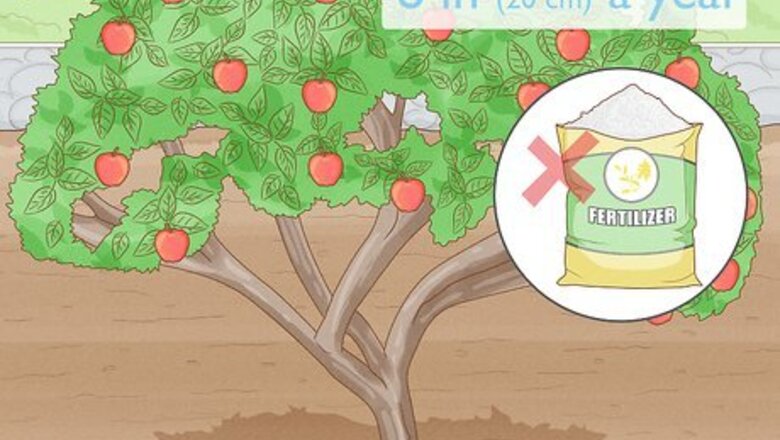
views
Do I have to fertilize my apple tree?
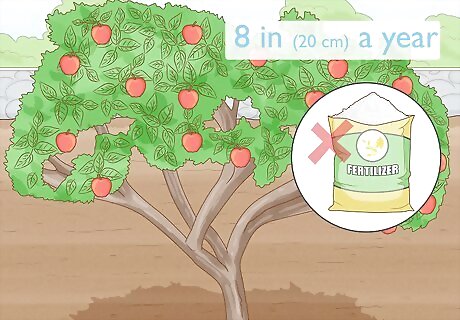
If your tree is thriving on it's own, you really don't need to fertilize it. Each year, your apple tree should grow an extra 8 and 15 in (20 and 38 cm). You don’t need to fertilize your apple tree if it’s already growing at least 8 in (20 cm) a year. However, if your tree isn’t growing that much, it probably needs fertilizer. Fertilizing too much can actually stunt the growth of apple trees, so it's important to evaluate growth first.
When should I fertilize my apple tree?
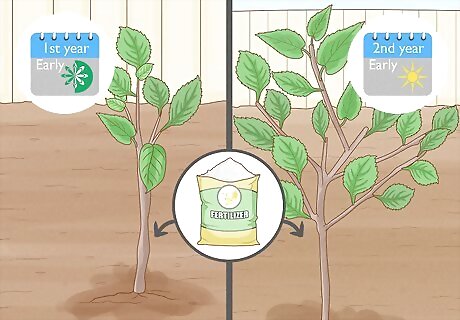
Nourish 1-to-2-year old trees twice a year—in the spring and summer. Experts recommend fertilizing your apple tree right after you plant it, and then a second time in early summer. During the second year, experts suggest fertilizing once in early spring, and a second time in early summer.
Fertilize mature apple trees once a year during the spring. Unlike other fruits, apple trees don’t need to be fertilized multiple times each year. If your tree is more than 2 years old, you only need to apply fertilizer once in the springtime to kickstart growth.
What fertilizer should I use?
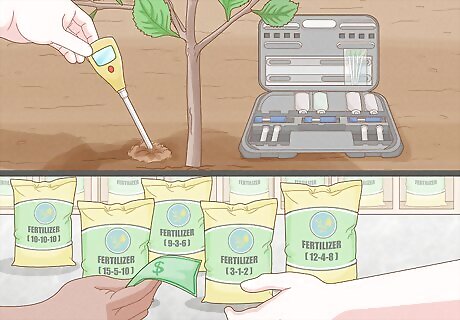
Do a soil test to see what your soil’s needs are. Unfortunately, there isn’t a one-size-fits-all fertilizer for apple trees. Instead, it really depends on where you live and the current soil conditions. A soil test will help you pinpoint which nutrients your soil needs so you can choose the right fertilizer. Buy soil test kits online or at your local home improvement store.
Pick a fertilizer based on your soil test results. Your test results will list a recommended NPK ratio—this is the percentage of nitrogen, phosphate, and potash that your soil needs. Write down this specific ratio, and head to a garden supply store. Then, buy a fertilizer with the same NPK ratio as your test results. For instance, if your test results recommend a fertilizer with 15-5-10 NPK, buy fertilizer with a 15-5-10, 3-1-2, 9-3-6, or 12-4-8 ratio. If the nutrients in the soil are pretty even, some experts suggest going with a balanced 10-10-10 fertilizer.
What other fertilizers can I use?
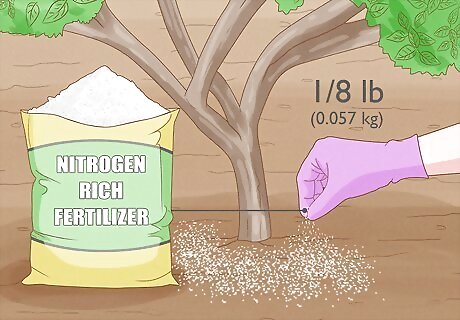
Try applying a nitrogen-rich fertilizer for mature trees. Apply ⁄8 lb (0.057 kg) of pure nitrogen for every year of your tree’s age. Once your tree is at least 8 years old, cap off the nitrogen fertilizer at 1 lb (0.45 kg). The ⁄8 lb (0.057 kg) rule applies to pure nitrogen. You can also use a 21-0-0 or 16-16-16 fertilizer, or a more organic fertilizer, like rabbit or steer manure. However, compared to the pure nitrogen, you’ll need to use 5 times as much 21-0-0 fertilizer, 7 times as much 16-16-16 fertilizer, 35 times as much rabbit manure, and 70 times as much steer manure.
How much fertilizer do I need for each application?
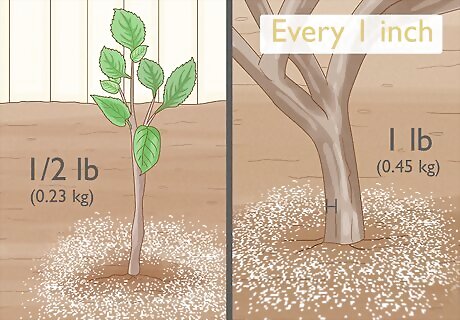
Apply ⁄2 lb (0.23 kg) of fertilizer for newly planted trees. After you first plant your apple tree, wait 3 weeks for the soil to settle. Then, spread ⁄2 lb (0.23 kg) of fertilizer around the tree to kickstart growth.
Use 1 lb (0.45 kg) of fertilizer for every 1 in (2.5 cm) of trunk width after that. In the following years, apply an extra 1 lb (0.45 kg) of fertilizer for every 1 in (2.5 cm) of tree trunk. Cap off the fertilizer once you’re using 2 ⁄2 lb (1.1 kg) every year. Some experts suggest adding an extra ⁄2 lb (0.23 kg) of fertilizer for each year of life. For instance, a newly planted tree gets a ⁄2 lb (0.23 kg) of fertilizer, a 2-year old tree gets 1 lb (0.45 kg), a 3-year old tree gets 1 ⁄2 lb (0.68 kg), and so on. Pay attention to your tree's growth and adjust, as needed.
How do I apply the fertilizer?
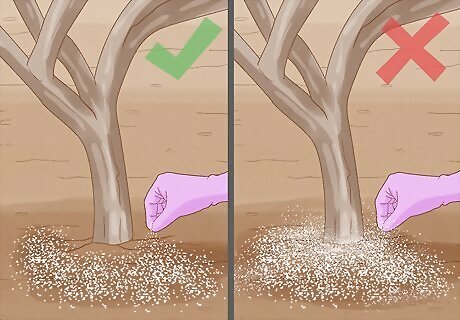
Spread the fertilizer on the ground beneath the tree. Don’t place the fertilizer in a mound or put in on the actual tree trunk, or else your apple tree might get damaged. Instead, scatter the fertilizer evenly around the tree trunk. You can water the soil after spreading the fertilizer.
Why is my apple tree not fruiting?
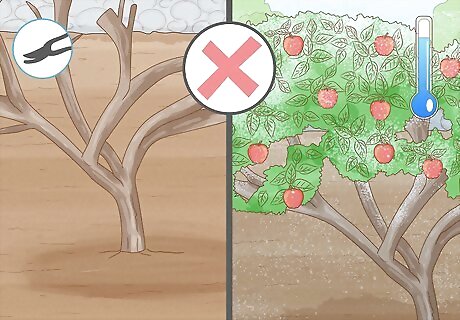
You pruned or fertilized your tree too much. When you over-fertilize and over-prune, your apple tree spends more time growing its wood, and the tree doesn’t yield any flowers or fruit. This can happen when you fertilize the grass near your apple tree, and your tree ends up absorbing some of the extra nitrogen.
Frost might be the culprit if you live in a cold area. If temperatures drop below 29 °F (−2 °C) while the tree is flowering, your apple tree might not produce fruit. To prevent this, plant your apple tree pretty close to your home, or on a more elevated section of land in your yard.
Pollen might be a factor. If your apple tree isn’t pollinated very well, it might not produce any fruit. Experts recommend cross-pollinating apples and pears together. You could also plant crabapples and ornamental Bradford pears near your apples, as well.
















Comments
0 comment